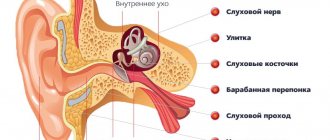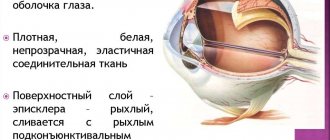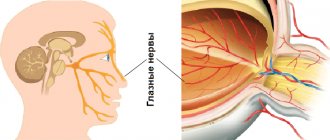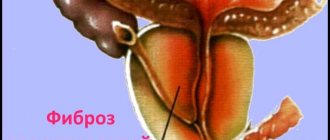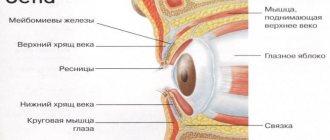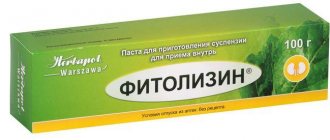Prostatitis is the most common urological disease in men. It is quite common in men after 30 years of age. Despite all the arguments and assumptions, many men naively believe that this disease will bypass them. Prostatitis is a characteristic inflammatory process occurring in the prostate gland. It can be cured not only with medication using pills and droppers.
There are other significant time-tested folk methods that can help in the treatment of this disease. The prostate gland or prostate is a glandular muscular organ located directly above the bladder. Its main function is to control urination and give sperm a liquid consistency. The prostate secretes a secret specially prepared in it.
Structural and functional features of the prostate gland
At different periods of a man’s life, the prostate gland undergoes metamorphosis. Before the onset of puberty, its structure is dominated by predominantly muscle tissue and small volume. At the peak of sexual activity, this is developed glandular tissue. In old age, normal involution leads to a decrease in the volume of the gland, and hypertrophic involution leads to its increase.
Anatomically, the prostate is an unpaired androgen-dependent (male) organ with approximate dimensions of 3 * 2.5 * 2.5 cm and a total weight of up to 20-25 g. The shape of the gland has the appearance of a chestnut or a rounded pyramid, pointing downwards. The initial part of the urethra or urethra passes through the thickness of the gland. The gland itself is located with its wide part or base upward and is adjacent to the bladder. The seminal vesicles are adjacent to the gland at the back, and the prostate itself is separated from the wall of the rectum by a very thin layer - Denonvilliers' fascia. Due to such close proximity of important organs, prostate pathology can be detected during digital examination and palpation.
The gland is covered on top with a fairly dense connective tissue capsule with strands or fibers extending into the thickness of the prostate. Feeding capillaries and nerve endings penetrate deeper through them. Blood circulation has common origins with the plexus of vessels of the final sections of the rectum and the vascular network of the penis. It is for this reason that sexual arousal leads to increased blood flow and metabolic processes in the prostate.
Normally, in the absence of physiological or anatomical and structural changes, the prostate does not manifest itself in any way, and its functioning does not cause discomfort, pain or deterioration in a man’s well-being.
Symptoms that appear in chronic prostatitis
In chronic prostatitis, symptoms are both general and local.
When localized, the disease manifests itself as the so-called prostatic triad:
- manifestation of dysuria,
- pain in the epigastrium, just above the pubis, in the perineum and groin,
- sexual dysfunction.
The pain is usually constant, practically unrelieved, and can radiate strongly to the lower back.
Pain during urination can radiate (give) along the urethra, to the head of the penis, to the scrotum, sacrum, and rectum.
Pain syndrome manifests itself during prolonged abstinence from sex, during sexual intercourse itself, and during ejaculation.
The pain is gradually increasing in nature.
Often the symptoms of prostatitis can be confused with cystitis, which has almost the same symptoms.
Differential diagnosis is necessary.
The table shows some differences between cystitis and prostatitis.
It will allow you to more clearly distinguish these two diseases from each other:
| Cystitis | Prostatitis | |
| Features of urination | Increased frequency, accompanied by pain at the beginning and end of the process. The volume of urine may not decrease. | The patient suffers from frequent false urges. The volume of urine is reduced. The stream becomes weak, sometimes the liquid comes out in drops. |
| Pain | In the lower abdomen, worse when urinating. | Concentrated in the scrotum, groin or rectum. |
| Temperature | Usually rises to insignificant numbers. | May remain normal. |
| Additional manifestations | The infection can spread to the kidneys, reducing their functionality. | Leads to adenoma, prostate cancer, the formation of calcifications and cysts. |
The pathogenesis of prostatitis can be both bacterial and non-bacterial.
The process can occur both acutely and chronically.
In acute prostatitis, gram-negative bacteria are isolated, which are very easy to detect.
They can be treated with the simplest antibiotics.
Mechanical function of the prostate gland
Structurally, the prostate is predominantly glandular tissue with an uneven distribution of striated muscle fibers. Mostly muscle tissue is distributed in a kind of ring in the immediate vicinity of the urethra. This provides the gland with mechanical function.
The constant obturator function is that the muscle fibers, being in a certain tone, act as an additional barrier in the initial part of the urethra, strengthening the main sphincter of the bladder.
The valve function is based on the fact that some of the fibers are specially located, woven into the muscle layer near the excretory duct of the gland in the seminal mound of the urethra. During sexual arousal and sexual intercourse, this mound mechanically blocks the space of the urethra, reliably isolating sperm from urine entering it.
Regulatory function of the prostate
To understand the possible pathologies of the prostate gland, it is necessary to understand that the gland is involved in the regulation of sexual activity. Although not an endocrine organ and not secreting hormones, the prostate nevertheless influences the neuroendocrine regulatory centers in the central nervous system via feedback. In other words, it adapts to the quality and intensity of a man’s sexual life and helps the central nervous system and higher centers adapt to these conditions. On the one hand, this is the importance of regular sex life, and on the other hand, the positive effect of stimulating techniques.
Culture method for diagnosing prostatitis
The secretion secreted by the gland is placed on a nutrient medium, where the causative agent of the disease, if present, forms colonies.
They can be clearly seen under a microscope.
Tank culture allows not only to determine the type of isolated pathogen, but also to find out the type of antibiotics that can have a detrimental effect on the pathogen.
Main risk factors for prostate pathology
In each case, the patient has not one, but several causes that cause a pathological process in this organ. . They also significantly influence the dynamics of the development of the disease, the formation of the clinical picture, susceptibility to successful treatment and the overall prognosis. Of this variety, the greatest negative degree has been proven for the following reasons:
- age characteristics;
- hereditary predisposition;
- long breaks in sexual activity;
- local hypothermia;
- low level of physical activity and a predominantly sedentary lifestyle;
- infection of the genitourinary system;
- frequent change of sexual partners;
- unfavorable living or working conditions;
- side effects of certain groups of long-term medications.
Non-inflammatory changes with increased volume
In this case, we are talking about BPH or benign prostatic hypertrophy, in other words, prostate adenoma. The essence of the changes is that the volume of the organ increases due to hypertrophy of the glandular tissue, and since the covering capsule is inelastic, hypertrophy very quickly leads to a gradual blockage of the urethra with characteristic clinical manifestations. Despite the fact that some of the clinical manifestations are similar to inflammatory ones, this is not inflammation of the prostate gland, and prognostic and therapeutic approaches here should be different.
Neoplastic changes
Oncological changes are associated with cancerous degeneration of cells and their fairly rapid growth. Histologically, the prostate itself is very rarely a source of cancer, and cancer develops from the paraurethral glands. But due to its high malignancy, the gland itself is quickly involved in the process. Therefore, it is especially important to track these changes in time and select an effective treatment method as early as possible.
At the first diagnosed changes or doubts regarding the condition of the prostate gland, you should immediately consult a specialist. Waiting tactics, self-diagnosis and self-medication are dangerous, as you can advance the disease to a stage where complete recovery is impossible.
Basic options for diagnosing prostate conditions
In order to establish an accurate diagnosis if pathology is suspected, the following diagnostic methods are used in modern urology:
- general detailed and biochemical blood tests;
- general urine test (three-glass sample);
- physical data during a digital examination of the prostate;
- microscopic examination of prostate secretion;
- bacteriological examination of the obtained biological fluids;
- antibacterial sensitivity of sown pathogens;
- immunological test (PSA) – prostate-specific antigen;
- Prostate Health Index (PHI);
- transrectal ultrasound;
- MRI, CT of the pelvic organs – if necessary.
The decision on the need for certain examination options is made by a urologist, based on symptoms.
The prostate hurts during an acute inflammatory process, what to do?
Acute prostatitis is characterized by a sharp onset of the disease with hyperthermia, fever and severe headaches. The listed symptoms are often accompanied by discharge from the urethra, pulsation in the prostate, frequent urination and pain in the groin. Against the background of malaise, the psycho-emotional state changes for the worse: the man quickly gets tired and becomes irritable.
What to do if your health worsens and the home first aid kit does not help? The only correct decision is a visit to the doctor and timely treatment. Pathologies in the pelvic organs cannot be ignored, so as not to provoke complications and prevent the transition of an acute condition to a chronic one.
Prostate massage: misconceptions and reality
If the term prostate massage is taken to mean any indirect mechanical effect on the prostate gland, then the following variants can be distinguished:
- Simple intimate stimulation. Used by sexual partners as an additional source of sexual arousal, obtaining more vivid erotic emotions and impressions. It is carried out using the fingers - manually or with the help of special devices. Can be considered a sign of a high level of intimate trust. Technically it consists of a mechanical effect on the posterior surface of the gland and stimulation of the anal ring and rectal ampulla. The main risk is that, due to the lack of skills and knowledge, there is a risk of injury to the organ and infection, as well as causing pain. At its core, it is not a massage.
- Diagnostic prostate massage. It is one of the main and mandatory methods of a full urological examination. Always carried out by a specialist in compliance with standard generally accepted techniques. .The goal is to obtain prostatic secretion for instrumental and laboratory analyzes and other tests. But it is not carried out in acute forms of pathology or other contraindications.
- Therapeutic prostate massage. It is a therapeutic procedure performed by a specialist. It has a certain generally accepted implementation algorithm. As a method of treatment, it is prescribed according to indications, outside the acute phase of the disease. Duration and number of procedures. For chronic prostatitis, this procedure is preventive in nature: it improves the functioning of the organ and reduces the frequency of relapses.
Any mechanical effect on prostate tissue is potentially extremely dangerous, risky and impossible in the following conditions, regardless of who carries out the effect - a doctor, a partner or the man himself:
- low-grade fever or any temperature reaction if its exact cause is unknown;
- acute bacterial prostatitis, or clinical exacerbation of the chronic form;
- urolithiasis with a condition after “passing of stones or sand”;
- hemorrhoids, especially with significant volumes of nodes, an indication of hemorrhoidal bleeding that has taken place;
- rectal fissures, inflammatory local reactions, bleeding from existing fissures;
- cysts and stones in prostate tissue of any location and origin;
- genitourinary infections in the acute phase, with unstable remission, with remission during antibiotic therapy;
- malignant neoplasms or suspicions of them, established benign tumors due to the risk of malignancy.
The problem of the prostate condition is very significant. This is an important factor for men's health, comfortable intimate life and the ability to fertilize. At the first suspicion, consult a doctor. Maintaining health is easier, faster and cheaper than restoring it. And only a specialist can quickly and completely solve problems.
Classification of chronic prostatitis
This classification was developed back in 1995, but to this day it is relevant and is divided into 3 class components:
- Acute prostatitis is an acute disease with a “simple” inflammatory process of the prostate.
- Chronic prostatitis, the genesis of which is bacterial.
- The stage of serious chronic inflammation of the prostate is of non-bacterial origin. Men note characteristic pelvic pain, but there are no obvious signs of infection, this may continue for 4-6 months.
At the stage of chronic prostatitis, the inflammatory process has a protracted form.
It is here that when diagnosing prostate secretions, a large number of leukocytes and, of course, infectious agents are found.
It happens the other way around: the inflammatory process is clearly evident, but there are no infectious agents in the prostate secretion and the number of leukocytes is normal.
Chronic prostatitis occurs without any complaints at all, asymptomatically, but the clear presence of the disease is detected in the prostate secretion.

